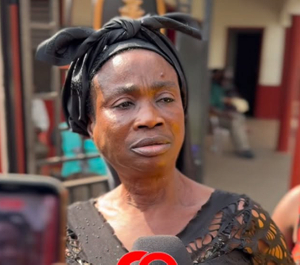The number of countries reaching and sustaining 90 per cent coverage of children with routine life-saving vaccinations has doubled since 2000.
Updated data on the status of immunisation worldwide in 2014 which was made available to Ghana News Agency on Thursday by World Health Organisation (WHO) revealed that 129 countries, six more than in 2013, now immunise at least 90 per cent of their children with the required three doses of diphtheria-tetanus-pertussis containing vaccines (DTP3).
In 2012, all 194 WHO Member States endorsed the Global Vaccine Action Plan (GVAP), and committed to ensuring no one misses out on vital immunisations, with a target of 90 per cent DTP3 vaccination coverage in all countries by 2015.
Earlier this year WHO warned that five of the six targets, including the DTP3 coverage target, contained in the GVAP are worryingly off-track, with only one target, for the introduction of under-utilised vaccines, showing sufficient progress.
The new data highlight the fact that 65 countries would require game changing strategies in order to meet the GVAP goal.
Among them, six countries with less than 50 per cent coverage with DTP3: Central African Republic, Chad, Equatorial Guinea, Somalia, South Sudan and the Syrian Arab Republic.
It said worldwide DTP3 immunisation coverage stands at 86 per cent for all three doses, with 91 per cent of infants receiving at least one dose.
According to the update in 2000, 21 million children did not receive even a first dose of DTP, a figure that has now dropped to 12 million.
Significantly, the updated estimates also show that India, the country with the largest number of unvaccinated children globally, has now achieved more than 80 per cent DTP3 coverage.
It was this was largely attributable to the revamping of the national immunisation programme, following the successful completion of polio eradication three years ago.
The updated estimates show that coverage with some essential vaccines other than DTP has also improved.
It indicated that the number of children protected from hepatitis B is high worldwide and increasing steadily.
It noted that while just 30 per cent of children received three doses of vaccine against the viral disease in 2000, this rose to 82 per cent in 2014, although more needs to be done to ensure that infants receive their birth dose within the first 24 hours of life.
It said Haemophilus influenzae type b (Hib) vaccine is one of the newest recommended vaccines to fight Hib diseases in children globally and have been introduced in all countries except China and Thailand; coverage, however, is still low at just 56 per cent.
The Update noted that the number of countries using other new vaccines, such as rotavirus and pneumococcal conjugate vaccine, had increased; however, challenges remain.
It said only 19 per cent of children were protected against rotavirus, despite the fact that some of the countries that have not introduced the vaccine have the largest share of diarrhoeal diseases.
Health News of Friday, 17 July 2015
Source: GNA
Updated data on immunisation coverage published
 WHO logo
WHO logo












